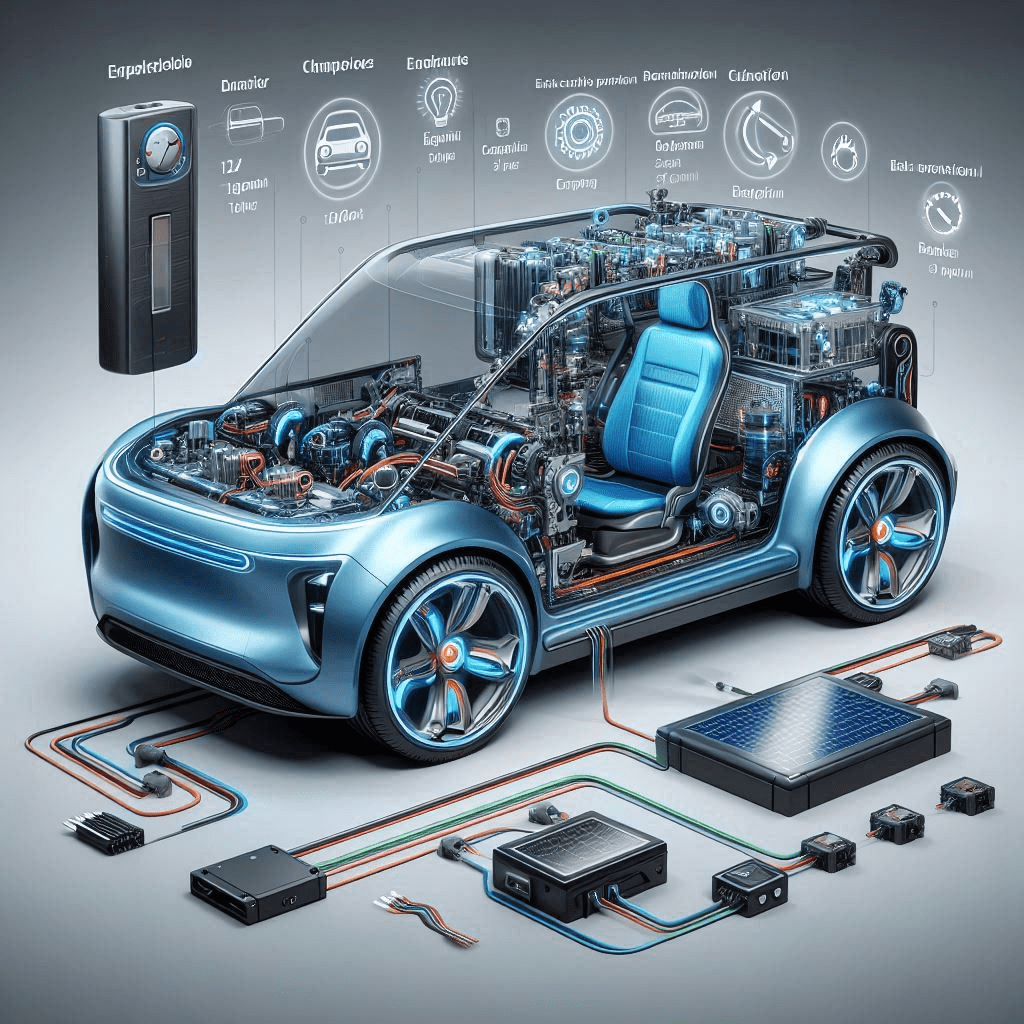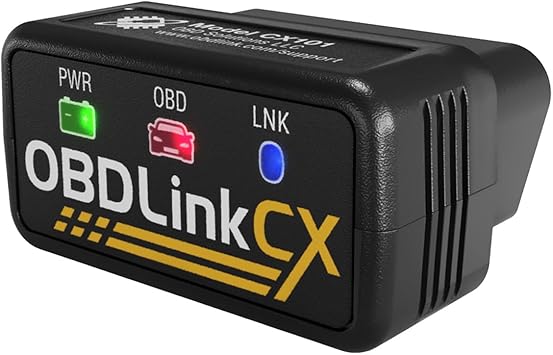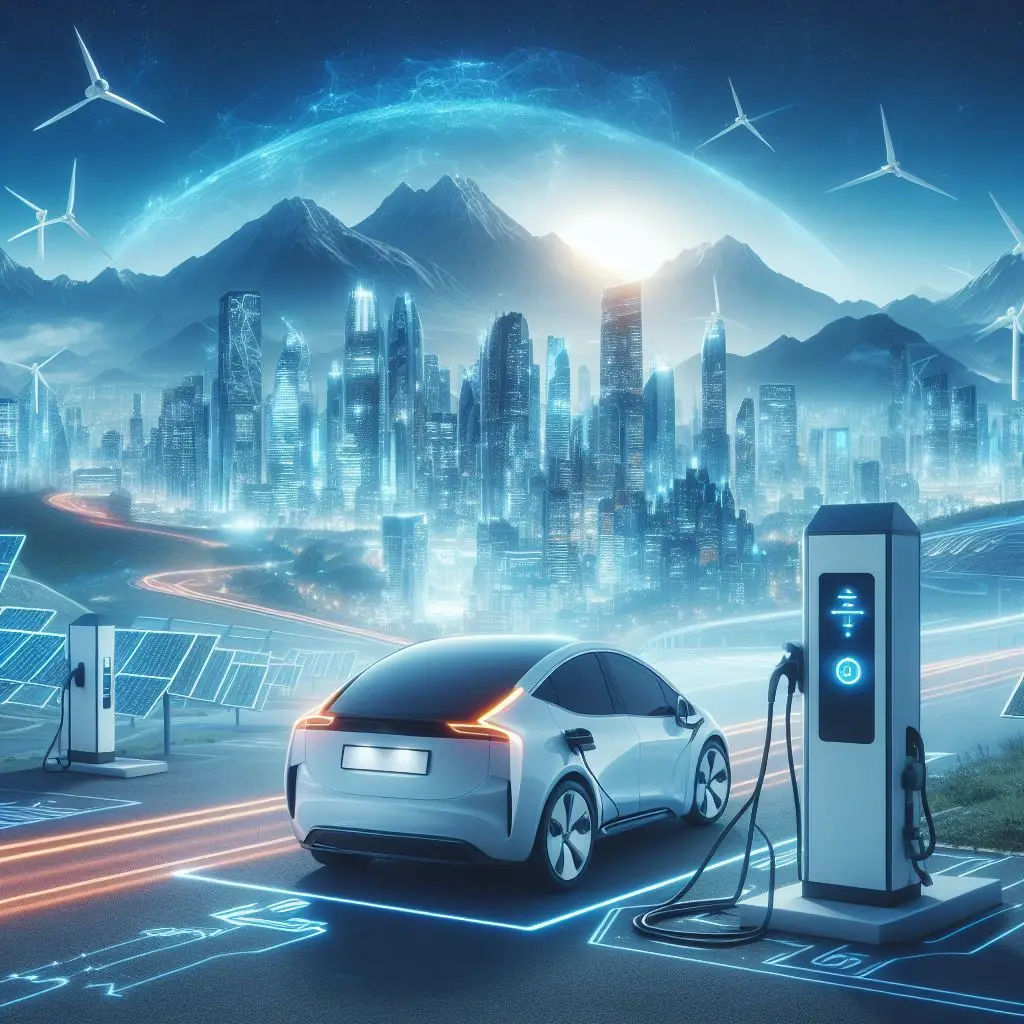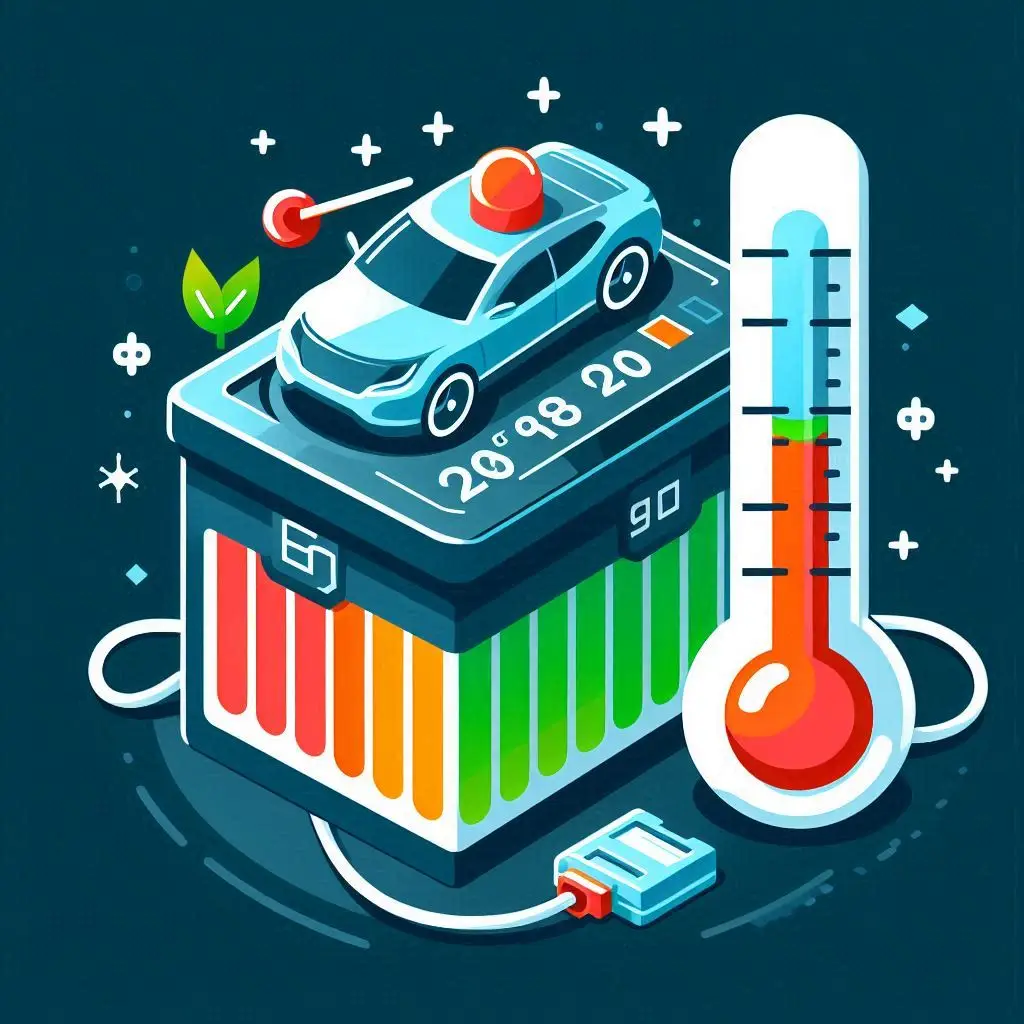There’s a common misconception that electric vehicles rely solely on their high-voltage battery for all their electrical needs. In reality, your EV also incorporates a 12-volt battery, necessary for powering a range of auxiliary systems such as lights, locks, and infotainment. Understanding the role of this smaller battery is imprtant for maintaining your vehicle’s performance and functionality, especially when parked for extended periods. This guide will explore why your EV is equipped with a 12V battery and how it supports your vehicle’s overall operation.
If you’re looking for High Voltage Battery care tips
Understanding the Role of an EV 12V Battery
A 12-volt battery in your electric vehicle may seem redundant given the presence of the high-voltage traction battery, but it serves several vital functions that ensure the vehicle operates smoothly and safely. A flat 12V battery in many cases may mean an inoperable vehicle, just lie your petrol car. Just like a petrol car though, it might just need a boost to get going. If the battery is in good condition, then it might just need recharging, which can be done by driving around, or plugging in to a charger.
History of Car Batteries
Little did early car manufacturers know that the humble beginnings of mechanical magnetos would evolve into the sophisticated battery systems we have today. By the 1930s, onboard batteries replaced hand cranks, and as the industry progressed, 12-volt batteries became standard, enabling cars to accommodate more advanced electrical requirements.
With the proliferation of 12V components, accessories and systems created for cars over the last century, it was inevitable that EVs would incorporate these systems. The ready availability of everything from lights to stereo systems, computers to dashboards, means that 12V is here to stay, regardless of what other voltages are available in EVs. Whether we maintain a 12V battery into the future remains to be seen, but a 12V system will exist for the forseeable future. Until more reliable 12V conversion systems become common, we’ll be stuck with having a 12V battery on board.
These 12V systems are common in trailers, caravans and boats as well. The trailer plug on a car feeds 12V to the lights, and systems on the trailer. Another reason why 12V components aren’t going away any time soon.
While the high-voltage battery in your EV powers the drive, the 12-volt battery steadies and supports numerous vital functions. Though your EV runs without the need for an ignition system like conventional cars, it still relies on these smaller batteries for operational efficiency.
Transitioning to electric vehicles doesn’t mean leaving behind the familiar 12-volt battery. In fact, it plays a critical role in powering your EV’s lights, door locks, and infotainment systems, which rely on a stable 12-volt supply. Although the high-voltage traction battery handles propulsion, the 12-volt battery keeps vital components operational, ensuring that all safety and entertainment systems function seamlessly.
Main Functions of the 12-Volt Battery
The 12-volt battery performs vital tasks like waking up the vehicle, powering contactors that connect the high-voltage battery, and acting as a buffer for peripheral electrical systems.
Citically the 12V battery powers the onboard computers which in turn control such systems as the Integrated Charge Control Unit (ICCU). The ICCU converts electricity between different voltages and currents. It’s vital for charging the car, converting AC to DC power, and somewhat ironically coverting high voltage to 12V to keep the 12V battery topped up.
Batteries in your EV are not mere backups; they actively manage the electrical needs of various components. Without the 12-volt battery, your vehicle wouldn’t properly initiate tasks such as unlocking the doors or turning on safety systems.


Types of 12V Batteries Used in EVs
Little do many electric vehicle owners realise that their vehicles often rely on a specific type of 12-volt battery to function optimally. Understanding the types of 12-volt batteries used in EVs can help you make informed decisions down the road.
Lead-Acid Batteries
While these are the traditional battery type, they still make their way into some electric vehicles due to their low cost and availability. Lead-acid batteries are heavier and have a shorter lifespan compared to newer technologies, making them less desirable for long-term use in EV applications.
Lithium-Ion Batteries
These batteries dominate the EV landscape thanks to their high energy density and lightweight nature. They are more expensive but offer significantly longer lifespans and faster charging times compared to lead-acid batteries, making them the preferred choice for many modern electric vehicles.
Lithium Ion batteries have revolutionised the way electric vehicles operate. Their ability to store large amounts of energy in a compact design means they can provide adequate power without the weight typically associated with lead-acid options. Additionally, these batteries are less prone to memory effects and can withstand more charge cycles, ultimately leading to reduced maintenance needs and longer life.
Factors Influencing the Need for a 12V Battery
Electrical Systems Powered by 12V
You rely on numerous electrical systems in your EV that operate on 12 volts, such as lights, infotainment, and power steering. Even though your vehicle is equipped with a powerful high-voltage battery, these systems still need a stable 12V supply for their operation.
Safety Mechanisms in Electric Vehicles
You should also consider the safety mechanisms designed to protect you and your vehicle. The 12V battery plays a key role in powering necessary safety systems, ensuring that they function correctly in case of emergencies.
This includes the activation of electronic contactors, which control the connection between the high-voltage traction battery and the EV’s electrical system. These mechanisms are crucial for preventing accidents and ensuring that your vehicle can safely power down its high-voltage components when not in operation.
Operating Conditions and Battery Performance
Assuming your EV is subjected to varying weather conditions, the performance of its batteries can be significantly influenced. Factors such as temperature extremes can affect how well your 12V battery performs in conjunction with the high-voltage battery.
Performance is vital; for instance, the 12V battery needs to maintain its charge during colder temperatures when electrical demand may increase. It is designed to wake up various systems, charge itself when necessary, and ensure that all electronic components are fully operational


Advantages of Using a 12V Battery in EVs
Enhanced Vehicle Safety
The presence of a 12-volt battery significantly enhances your vehicle’s safety features. It plays a crucial role in powering the electric contactors that safely manage the connection of the high-voltage traction battery. By ensuring these systems remain de-energized when the vehicle is turned off, you reduce risks associated with accidental high-voltage exposure.
Compatibility with Existing Automotive Technology
Even as electric vehicles evolve, many of the systems you rely on—like lights, locks, and infotainment—have been transferred from traditional combustion-engine vehicles and continue to operate on a 12-volt system.
Compatibility with existing systems means you can enjoy a seamless transition if you’re switching from a traditional vehicle to an EV. This adaptation is not just practical; it also minimizes the need for significant redesigns in electrical architecture, ensuring you can easily access familiar features even in your new electric vehicle. You can continue to tow your trailer or caravan with the familiar 12V connectors for lights and brakes.
Long-term Cost Efficiency
Clearly, a 12-volt battery contributes to long-term cost efficiency. It allows the electric vehicle’s larger traction battery to perform optimally without running the risk of overuse.
Vehicle performance can be maximised by ensuring that the high-voltage battery only powers high powered systems like drive motors, thereby preserving its lifespan and ultimately saving you money on replacements or repairs. Additionally, by using a DC-to-DC converter to keep the 12-volt battery charged, you maintain efficiency without putting unnecessary strain on your main battery system.
Disadvantages of 12V Battery Use in EVs
After reviewing the crucial role of 12V batteries in electric vehicles, it’s important to also consider the drawbacks they present. While they are important for auxiliary systems, several disadvantages come into play that may affect your overall EV experience.
Limited Energy Storage Capacity
Some 12V batteries used in EVs have a limited energy storage capacity in comparison to the large high-voltage traction batteries. This means they can only power smaller systems for a limited duration, making it critical for you to ensure their health to avoid issues with vehicle accessibility and operation. Sitting in your car with the stereo blasting and the lights on, or levaing the interior light on overnight is no more recommended in an EV than in a traditional car.
Maintenance Challenges
Storage and maintenance of 12V batteries can pose challenges for EV owners. Unlike high-voltage batteries that are usually maintenance-free, 12V batteries require periodic checks and replacements to keep them functional. This is especially important if you leave your EV parked for extended periods, which can lead to self-discharge.
To keep your 12V battery in optimal condition, you should regularly monitor its charge level and ensure it’s being properly maintained through the vehicle’s DC-to-DC converter. Neglecting maintenance may lead to failure, affecting the performance of various auxiliary systems in your EV. Be mindful of, a well-maintained battery can enhance your driving experience and extend the life of your vehicle’s systems.
Potential for Battery Failure
Little-known to many EV owners, the 12V battery can potentially fail, which may leave you unable to unlock or start your vehicle, even when the high-voltage battery is still charged. This can lead to inconvenience and frustration when you rely on your EV for everyday transportation.
Battery failure can occur due to various reasons, including poor maintenance, extreme temperatures, or manufacturing defects. If your 12V battery becomes depleted or malfunctions, you might encounter issues such as inability to power important systems like door locks and infotainment, affecting your overall driving experience. Staying proactive about the health of your 12V battery can save you from such unexpected troubles.
12V battery booster – this might just get you out of trouble if your 12V batter goes flat. Just like jump starting a petrol car. I keep mine in my frunk, right next to the battey where it’s handy if I ever need it,.


Tips for Maintaining Your EV’s 12V Battery
Once again, the importance of the 12V battery in your electric vehicle cannot be overstated. Proper maintenance is easy, but can significantly extend it’s lifespan and ensure your vehicle operates smoothly. Here are some tips to keep your 12V battery in top shape. You can do this yourself, or ask your mechanic to do it as part of scheduled maintenance:
- Regularly inspect battery connections for corrosion.
- Test the battery voltage periodically.
- Avoid deep discharges to maintain battery health.
- Ensure optimal charging conditions are maintained.
- Monitor your vehicle’s power settings to avoid unnecessary drains.
Knowing these maintenance tips can help you prolong the life of your EV’s 12V battery and enhance the overall performance of your vehicle.
Regular Inspections and Testing
Checking for loose or corroded connections can prevent unexpected issues. Periodically test the battery’s voltage to ensure that it is within the optimal range. If you notice a significant drop in voltage, it might be time for a replacement.
Avoiding Deep Discharge
Regular prevention of deep discharges is crucial for your battery’s longevity. Deep discharges occur when the battery’s voltage drops significantly, which can damage it over time. As your 12V battery is used to wake the vehicle and manage auxiliary systems, it’s vital to keep it charged. It’s especially important to not leave your EV parked for extended periods without periodic wake-ups to recharge the 12V battery.
Your EV periodically wakes to charge the 12V battery from the traction battery, so if you plan to park it for more than a few weeks, consider using a trickle charger or a smart battery maintainer to prevent deep discharge. This practice helps to maintain the battery’s charge and health, ensuring that you can start your vehicle whenever you need to.
Ensuring Optimal Charging Conditions
If you want your EV’s 12V battery to perform well, you must ensure it is charged under optimal conditions. The charging process should be controlled and efficient, which is facilitated by the DC-to-DC converter that maintains the 12V battery while the vehicle is operational. Just like a petrol car, regular operation of your vehicle helps keep the battery sufficiently charged.
Conditions such as temperature and usage frequency can affect how effectively the battery charges. Extreme temperatures can hinder the charging process, so make sure to park your EV in a climate-controlled environment whenever possible. Additionally, frequently driving your EV allows the system to actively manage the 12V battery’s state of charge, helping to avoid possible deficiencies in power supply.
.Step-by-Step Guide to Troubleshooting 12V Battery Issues
Not every issue with your electric vehicle can be attributed to its high-voltage traction battery. It’s much more likely that problems will arise from the smaller 12V battery. This guide walks you through identifying symptoms of battery failure, testing the battery, and replacing it if necessary.
| Step | Action |
|---|---|
| 1 | Check for common symptoms such as the inability to unlock or start your vehicle. |
| 2 | Test the voltage of your 12V battery using a multimeter. |
| 3 | Evaluate connections for corrosion or looseness. |
| 4 | Replace the 12V battery if it shows signs of failure or is undercharged. |
Identifying Symptoms of Battery Failure
Identifying the symptoms of a failing 12V battery can save you time and hassle. Look for signs such as dimming lights, unresponsive electronics, or failure to unlock or start your EV. Many EVs display warnings on the dashboard if there are issues emerging, keep an eye out for these. If your car’s system isn’t engaging, this could indicate that your 12V battery may be the root cause of the issue.
Testing the 12V Battery
Battery testing can confirm whether your 12V battery is failing. Use a multimeter to measure the voltage of your battery; a healthy 12V battery should read between 12.4 and 12.6 volts when not under load. If it’s significantly lower, it may need charging or replacement.
Make sure you’re familiar with using a multi-meter and you have it set to the right setting. If you’re not sure, seek assistance from someone in the know. Testing your 12V battery involves connecting the multimeter’s positive lead to the battery’s positive terminal and the negative lead to the negative terminal. If your reading falls below 12.4 volts, it’s time to investigate further or consider charging the battery. Regularly checking this can prevent future issues and ensure your vehicle remains operational.
Replacing the 12V Battery
Battery replacement might be necessary if your tests indicate the 12V battery is no longer functional. Ensure you use a compatible battery designed for your EV model when replacing it to avoid any complications. Check to see if you have a warranty claim as well. No point in forking out if the manufacturer will pay.
With the replacement process, check to see if you need to isolate the high voltage from the 12V system. Then first disconnect the negative cable followed by the positive cable from the old battery. Install the new battery by connecting the positive terminal first, followed by the negative. This simple yet imperative step will restore power to your vehicle’s auxiliary systems, ensuring smooth operation once again.
Caution
If you have a lot of things connected to your 12V battery, then you may be at risk of depleting the battery if left for long periods. Commonly attached devices include dashcams (hardwired to operate when the car is off), and alarms. Some battery monitoring units and OBD2 dongles, especially those using Bluetooth, can put a load on the battery and care should be taken to make sure these don’t deplete the 12V battery. Driving regularly will help stop this, but isn’t necessarily going to stop degradation completely.
What can you do to monitor and maintain your EV 12V Battery?
Here are a few items that can help monitor battery health. Links to Amazon purchase pages are provided below.
OBD2 Dongle – often used to monitor high and 12V battery, as well as speed, and other attributes. Often used for a live feed to route planners and other apps.
12V battery booster – this is a jump starter and will likely get you out of trouble when the 12V battery goes flat. Often gives enough of a boost to get the car into a state where the high voltage battery can start charging the 12V battery again. May be enough to get you going to get home or to a garage if the 12V battery has failed. This unit can be used to jump start an ICE as well. If you need to jump start larger vehicles, then there are options for higher Amps. These are generally not required for an EV.
Battery Monitor – can used to monitor ongoing battery health, can include history over the last month.
Final Words
Your electric vehicle needs a 12-volt battery to support vital systems such as computers, charge control units, lights, locks, and safety features that operate at this voltage. While the high-voltage traction battery powers your EV’s propulsion, the 12-volt battery serves vital roles like waking up the vehicle and powering the electrical contactors that connect to the traction battery. It ensures that even when your EV is off, systems remain functional and ready, providing you with a seamless driving experience.
This is the OBD2 Dongle I use in my Kia EV6.
Don't make the mistake I made with my first OBD2 dongle, which was downright flaky. It was cheap unit (about $50), which I later found wasn't on the official ABRP list, despite being recommended on several forums.
A jump starter which will likely get you out of trouble if your 12V battery goes flat.
May be enough to get you going to get home or to a garage if the 12V battery has failed.
This unit can be used to jump start an ICE as well with larger capacity options if you need to jump a bigger vehicle.
Monitor ongoing battery health. Connects to Android or Apple mobile phones.
Includes up to one month of history and graphs of battery usage.





